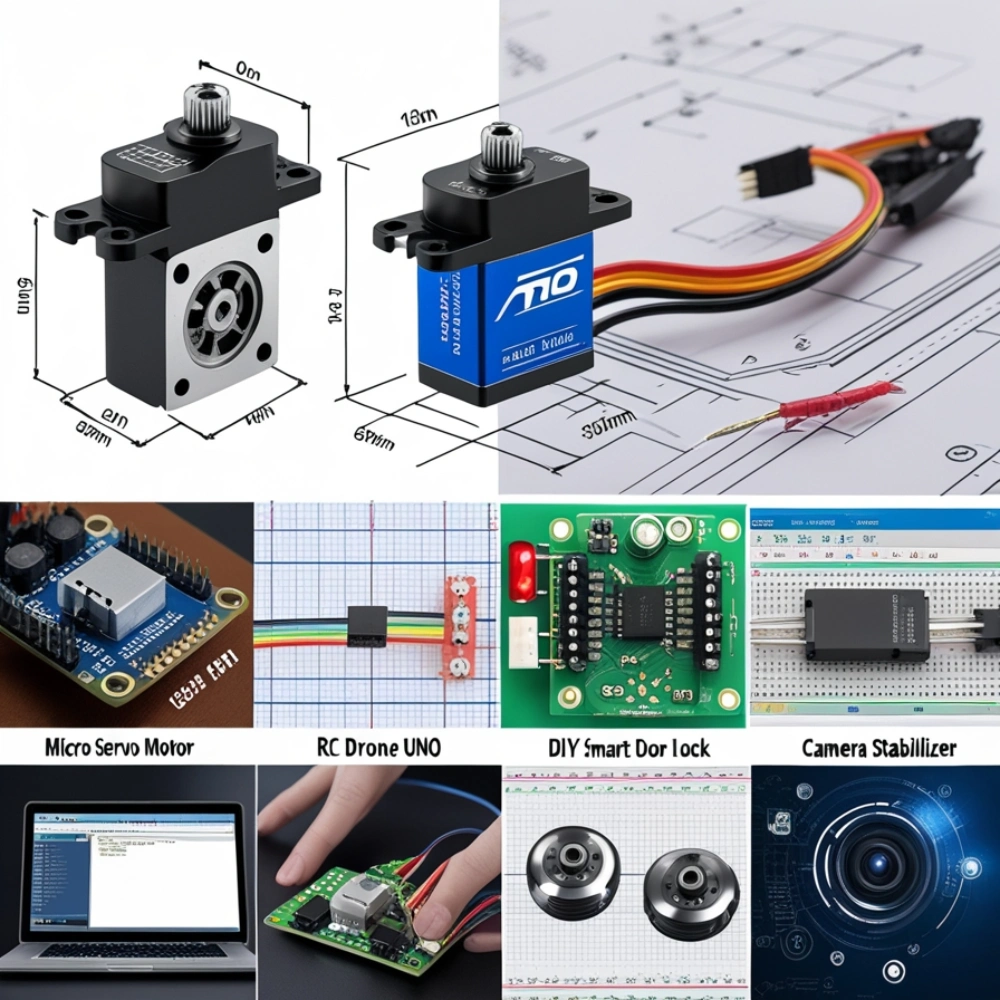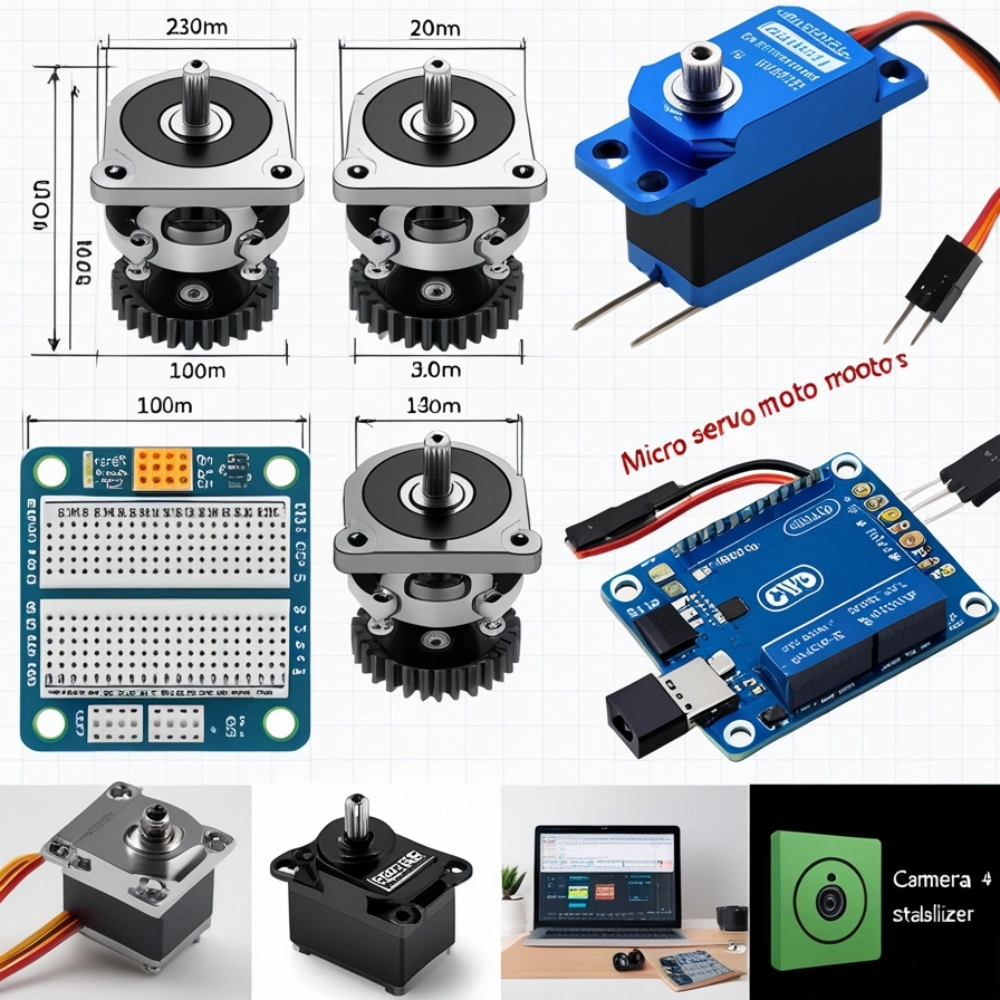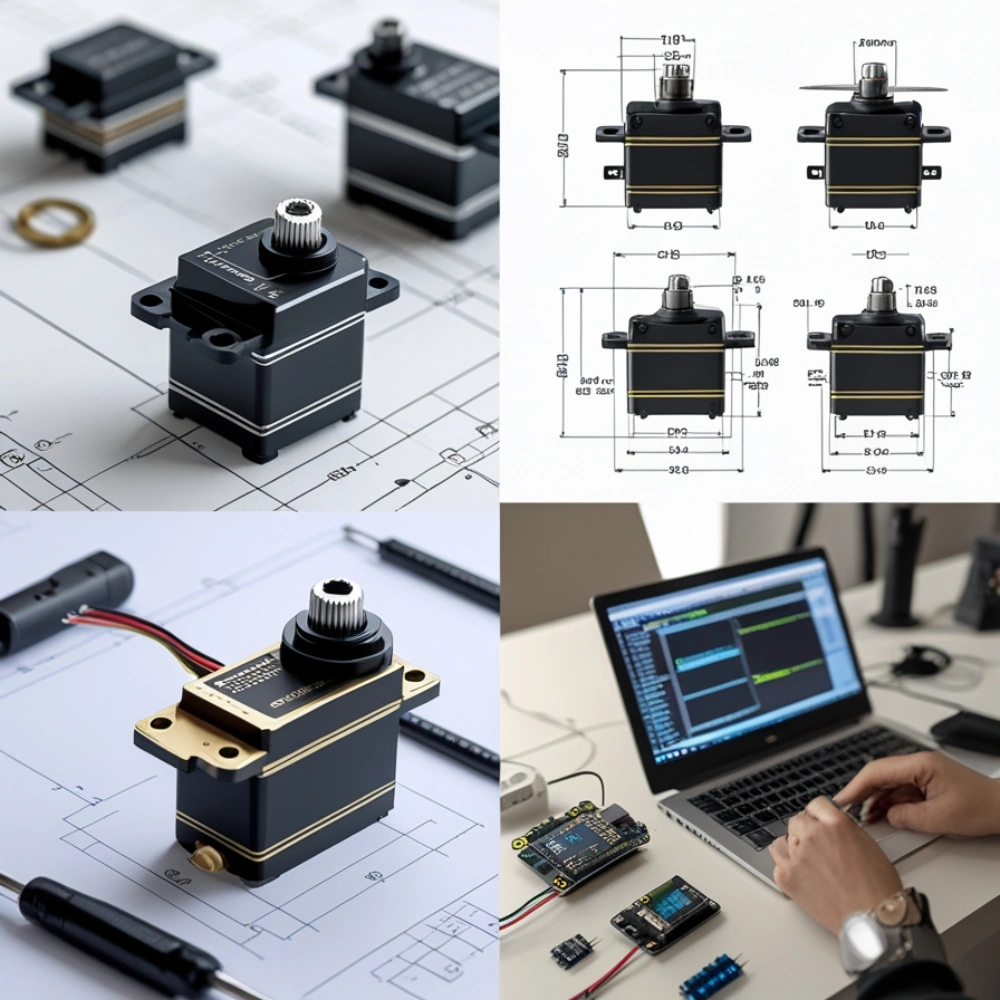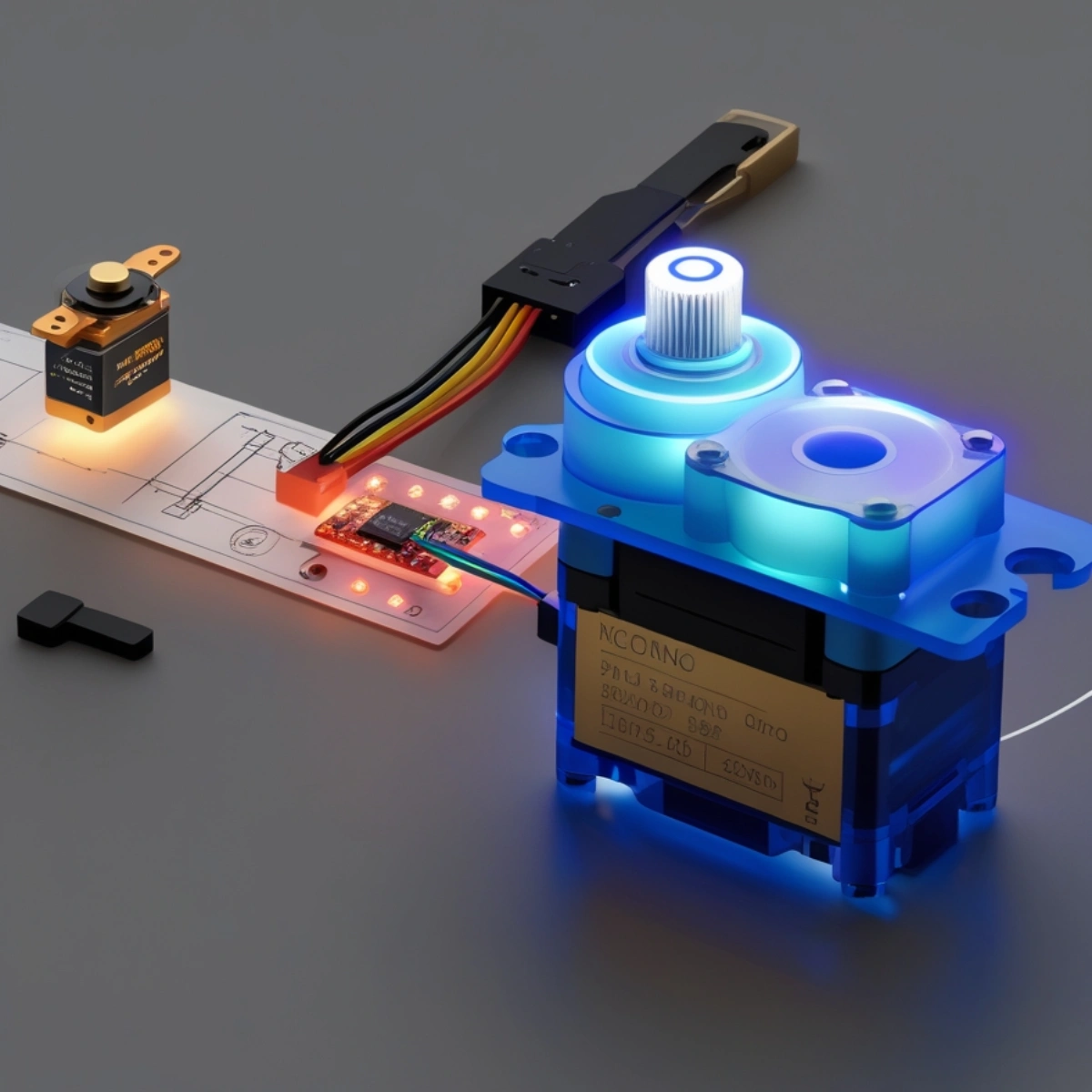Introduction: What is a Micro Servo Motor?
If you’re working on DIY projects, robotics, or hobby electronics, you’ve probably come across the term “micro servo motor.” But what exactly is it? Simply put, a micro servo motor is a small but powerful motor that can rotate at specific angles, providing precise control for a variety of applications. Whether you’re controlling the movement of a robot arm or adjusting the position of a camera, micro servos are compact, reliable, and highly effective.
In this article, we’ll dive into what makes micro servos unique, their features, benefits, and why they’re commonly used in both professional and hobbyist projects.
What is a Micro Servo Motor?
A micro servo motor is a type of servo motor designed to be smaller and more compact while still providing reliable performance. It’s often used in applications where size and weight are critical factors. These motors are perfect for tasks that require precise movement, such as rotating objects or adjusting positions.
Unlike standard motors, which operate continuously, a servo motor uses a closed-loop control system. This means it can be programmed to move to a specific position and then stop. This makes micro servo motors ideal for applications where accuracy and repeatability are important.

How Does a Micro Servo Work?
A typical micro servo motor has a small electric motor connected to a gearbox. The gearbox amplifies the motor’s power, allowing it to rotate a shaft to a specific angle. The controller communicates with the motor, instructing it to move to a precise position within a specific range, typically from 0 to 180 degrees.

Key Features of Micro Servo Motors
1. Compact Size
As the name suggests, micro servo motors are designed to be small and lightweight. They’re typically used in projects where space is limited, like in remote-controlled vehicles, drones, or small robots.
2. Precise Control
Micro servos are capable of moving to very precise angles. This makes them perfect for applications that require accuracy, like steering mechanisms in robotic arms or camera gimbals.
3. Easy to Use
Micro servo motors are user-friendly, especially for beginners. They usually come with easy-to-follow wiring instructions and can be controlled using basic microcontroller boards like Arduino or Raspberry Pi.
4. Low Power Consumption
Due to their compact size and design, micro servo motors consume relatively little power compared to larger motors, which is especially useful for battery-powered projects.
Advantages of Using a Micro Servo Motor
Micro servo motors come with several benefits that make them popular in various applications:
1. Space-Saving
Because of their small size, micro servos can fit into tight spaces. This is a big advantage in projects where space is limited but precise movement is still required.
2. High Accuracy
These motors are built for precision. If you need to control an object to move to a specific angle or position, micro servos will give you the control you need without overshooting or underperforming.

3. Versatile Applications
Micro servos are used in many areas, including:
- Robotics: For controlling robotic arms, legs, or even fingers.
- RC Cars and Drones: For steering and controlling various parts.
- Cameras: To adjust lenses or stabilize camera movements.
- DIY Projects: Great for students or hobbyists who are building their own devices.
When to Use a Micro Servo Motor?
Micro servo motors are a great choice for a variety of projects, particularly when you need:
- Precise positioning: Micro servos are ideal for controlling small objects or parts where precision matters.
- Compact solutions: If your project has size or weight restrictions, these motors fit the bill perfectly.
- Low-power consumption: Micro servos are energy-efficient, which makes them great for battery-powered devices or portable projects.
Comparing Micro Servo Motors to Regular Motors
Here’s a quick breakdown of the key differences between micro servo motors and regular motors:
| Feature | Micro Servo Motor | Regular Motor |
| Control Type | Precise angle control, usually 0-180 degrees | Continuous rotation |
| Size | Small, compact design | Larger and bulkier |
| Applications | Robotics, RC vehicles, camera adjustments | Fans, pumps, household appliances |
| Power Consumption | Low power usage | Varies, but generally higher power usage |
How to Control a Micro Servo Motor
Controlling a micro servo is relatively easy, especially for beginners. Here’s a basic guide to getting started:
- Connect to a Microcontroller: To control the servo, you’ll need a microcontroller like Arduino. Simply connect the servo’s control wire to a PWM pin on the board.
- Power Supply: Most micro servos run on 4.8-6V, so make sure you provide the right voltage.
- Programming: Using a simple code (like Arduino’s Servo library), you can command the motor to move to specific angles based on input.
Common Uses of Micro Servo Motors
Here are some of the most common applications for micro servo motors:
- Robotic Projects: Micro servos are used to control the joints of robots, making them move like real-life machines.
- RC Cars and Drones: They are perfect for steering wheels, camera gimbals, or controlling other parts of remote-controlled vehicles.
- DIY Electronics: For hobbyists building mechanical arms, model airplanes, or even automated doors.
- Camera Stabilization: Used in camera rigs to stabilize footage, especially in drones or handheld devices.
Frequently Asked Questions (FAQ)
Yes, but you need to consider factors like weather conditions and power supply. Some micro servos are designed to be more weather-resistant than others.
With proper care and maintenance, micro servos can last for thousands of cycles. Avoid overloading them to ensure longevity.
Absolutely! Micro servos are very easy to control, especially when using microcontrollers like Arduino or Raspberry Pi. Basic code and wiring can get you started in no time.
Conclusion: Why Choose a Micro Servo Motor?
Micro servo motors are a fantastic choice for anyone looking to add precise, compact movement to their projects. Whether you’re building a robot, controlling an RC car, or designing a DIY project, these motors offer great versatility, accuracy, and ease of use.
So, the next time you need a motor for a small, precise task, consider the micro servo motor – it might just be the perfect solution!
Explore More! Read key Differences of Servo vs Motor.


1 thought on “Micro Servo Motor”